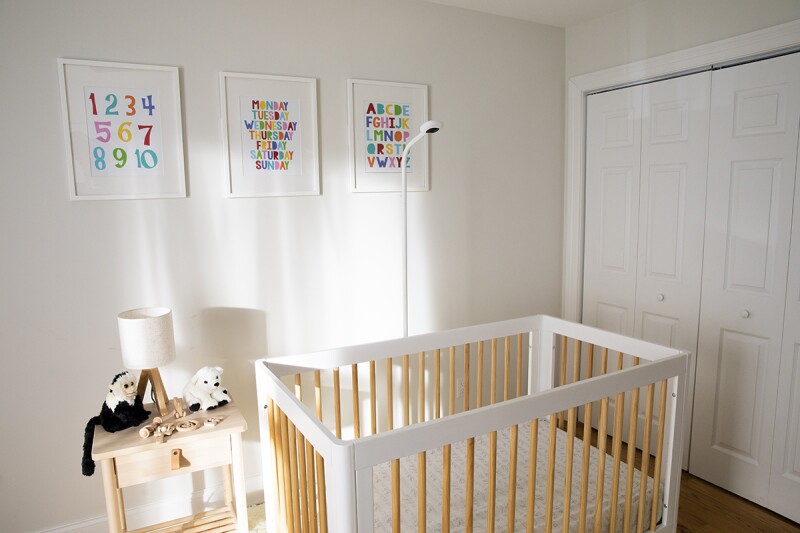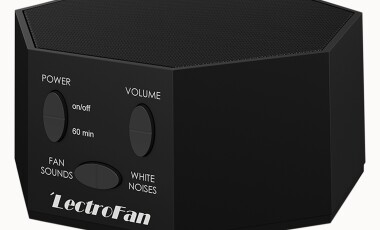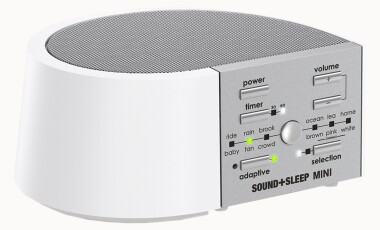When my husband and I arrived at the hospital’s birthing center, where we would have our child just a few months later, the nursing staff began our tour by handing us a goodie bag filled with some basic newborn care information. After reviewing several handouts, a poster, and a board book, it was clear that the most significant emphasis was on safe infant sleep.
As first-time parents, we did exhaustive research on the best products to use to ensure that we adhered to the American Academy of Pediatrics’ infant sleep safety recommendations. The product we fell in love with was the Nanit Pro Smart Baby Monitor. Though there are many baby monitors — most at lower prices points — we knew this was the one for us.
The Nanit appealed to us for its high-quality camera and video technology, as well as the data it provides about a baby’s sleep.
Two years later, we are more in love with the Nanit than ever thanks to that comprehensive data, which has allowed us to quickly get our son on a sleep schedule that works for the whole family. After the initial sleepless nights of the fourth trimester, we were able to use Nanit’s Insights, data, and tips to get my son sleeping six and then eight and then 10 hours per night in his first year of life. Now that he’s 21 months old, he is consistently sleeping 12 hours per night and we’re still using Nanit’s data to adjust his schedule as needed — whether it’s during Daylight Saving Time or when he’s sick.
How the Nanit data and app work
This system is much more than a typical baby monitor, thanks to the Nanit’s app and its features.
The camera comes with 1080HD video, zoom, and night vision, along with a built-in nightlight. Meanwhile, the app allows you to view your baby from anywhere, has two-way and background audio, and displays the temperature and humidity in your child’s room. It also has real-time sound and motion alerts — which I very much depend on to let me know if my son stirs or awakens in the middle of the night.
But what really impressed my tech-savvy husband and me is that the camera included a year’s worth of Nanit Insights that would help us track our son’s sleep and get personalized sleep tips based on his habits and behavior. The Insights also include a sleep history, video clips, time-lapse sleep memories, and an activity feed that allows parents to review movement and noise throughout the night, giving me a sophisticated perspective on my son’s overall sleep.
I will often view the activity feed and time-lapse videos to see if my son is sleeping well or moving around a bit too much. Over the years, reviewing this data has allowed me to notice patterns in his behavior and adjust as needed.
For instance, I recently realized that he had an ear infection because I could see that he was shifting throughout the night a lot more than usual and grabbing his ears as he slept. He didn’t have a fever — as he had during previous bouts of ear infection — so I relied on the data I saw in my Nanit app to recognize that something was wrong and take my son to the pediatrician before things progressed.
“One of the greatest things parents can learn is their baby’s trends and patterns,” says Dr. Natalie Barnett, Nanit’s Director of Clinical Research. “The data can help them understand if the baby may be going through a sleep regression or perhaps is about to reach a milestone.”
Or, in my case, help me realize that my baby may need to see a doctor.
Encouraging safe sleep and optimizing rest
To understand the safe sleep and data benefits of the Nanit, I spoke with Barnett about some of the features of the app and common questions parents may have, while providing my review of this camera.
Safe sleep was a conversation that I remember having with almost every medical professional I came across during the third trimester of pregnancy. And when it came to choosing a baby monitor, I was happy to see that Nanit promotes safe sleep as well.
“We want to encourage families to have their babies in their own sleeping space, such as a crib or bassinet,” says Barnett. “Nanit algorithms work best when the camera is mounted above a crib or bassinet.”
Aside from all the camera features, their focus on safe sleep is further demonstrated in the app’s message, which Barnett explains, “aligns with all of the safe sleep recommendations of the American Academy of Pediatrics.” Plus, she shares that Nanit aims “to encourage families to develop independent sleepers, which we know is the safest way for a baby to sleep.”
This focus on safe sleep helped my husband and me get through some of the more difficult sleepless nights of my son’s early life. Those first few months of newborn life were challenging for me, especially as someone who has a generalized anxiety disorder and was diagnosed with perinatal anxiety in the second trimester of pregnancy. So establishing good sleep for me and safe sleep for my son was a top priority for the sake of my mental wellbeing. Through the Nanit app, I was often reminded how to make sure my baby was sleeping safely in his bassinet. I also received information about various milestones and essential things I needed to know about how the outside world is impacting my son’s sleep.
Expert advice to help babies and parents establish consistent bedtime routines

One of the hallmarks of good sleep for babies, and subsequently parents, is having a consistent bedtime routine. “There are numerous studies that have demonstrated the importance of a bedtime routine,” says Barnett. “When babies have a consistent bedtime routine, they are also more likely to have a consistent bedtime, and both of these things are key to establishing healthy sleep habits for babies and children.”
Nanit’s own data shows this to be the case as well. “We notice in our data that babies who have a consistent bedtime routine are also the babies who sleep longer at night,” she says. “We also see that our babies sleep better and longer than other published averages of U.S. infant sleep, with our babies sleeping around an hour longer than other published data.”
Her recommendation is to choose 2-3 easy things parents can do before bed to indicate to their baby that “it is time for sleep.” A 15- to 30-minute routine before bed to help your baby wind down is all that is needed to “help get your baby’s little body ready for bed,” she says.
Once we established a bedtime routine that worked for us – involving a bath, baby massage with lotion, and then a lullaby by yours truly — I used Nanit’s Sleep Schedule Generator to figure out the best times for my son to sleep. I didn’t realize how much having an age-appropriate schedule would improve his sleep and, even better, allow me to get more sleep too.
I have also found the “inbox” within the Nanit app to be incredibly helpful in providing tips for staying consistent with the habits we were helping him develop. For example, I distinctly remember reading a tip about consistency when my son was going through his 9-month sleep regression and all I wanted to do was get some shut-eye.
That’s when I thought about foregoing all of the healthy sleep habits we had established and just snuggling my son for an hour until he was fully asleep. But Nanit’s tip about consistency reminded me to keep going and not sacrifice long-term sleep habits for one night of rest.
As he grew, the Nanit app sent me recommendations, expert advice, and age-related tips that would allow me to adjust his routines as necessary, such as establishing a regular nap schedule and information on scaling back night feeds.
Why is their data so thorough and detailed? Barnett says that what makes Nanit so unique is the best-in-class sleep algorithms that were “developed in collaboration with the best sleep researchers in the world.”
Data-driven insights for healthier sleep habits
Nanit’s dedication to data is one of the reasons why I personally love the system so much, but what really impressed me after speaking with Barnett is that the company works with top universities, hospitals, and other research teams to analyze the overall data and publish a yearly report on sleep.
This ongoing research allows the company to provide even more insight to help families who want to get more (and better) sleep.
Their 2020 report showed some interesting differences between the sleep habits of girls and boys, plus showcased some insightful findings that parents can use to improve sleep at home. For instance, the report found that babies in cloth diapers require more visits at night and using a white noise machine increased babies’ sleep by 30 minutes per night.
However, this report was published in March 2020, before the World Health Organization officially declared COVID-19 a global pandemic.
So what I really wanted to know was how my baby — who was born at the end of March 2020 — and babies born after the start of the pandemic were impacted. I remember feeling a lot of extra anxiety in those early pandemic and newborn days, and the 2021 report indicates I wasn’t the only one.
Nanit’s data shows that, after lockdown began, babies were visited by parents more often in the night and woke up 12% more often. But despite the stresses of the early pandemic, data showed that regular sleep patterns returned by May. Barnett also shares that Nanit’s published data demonstrates that “our babies sleep better now compared to before the pandemic began!”
“Babies are going to bed earlier and sleeping longer,” she says. “While the pandemic may have been badly disruptive to many aspects of our lives, infant sleep was something that has actually improved. Now, as we move back to more normalcy, we hope that we can take some of the lessons of the pandemic and maintain those good routines for our babies.”
Babies’ sleep efficiency truly matters
My favorite piece of data, though, is Nanit’s sleep efficiency tracker.
This is the feature that first tipped me off to my son’s ear infection since I could see that his score suddenly went down. Barnett explains that this is one of the top features parents use to understand and track their children’s sleep.
“The sleep efficiency score gives parents an indication of how much time a baby was awake during the night compared to how much time they were asleep,” she says. “Most babies spend part of the night awake (often unbeknown to their parents!) and the sleep efficiency score gives parents a feel for how well their babies are sleeping at night and if they might be struggling to get themselves back to sleep during the night.”
Although every baby is a little different, this score has helped me to see some patterns in my son’s sleep — as well as how his sleep has improved over time. For example, the night my son’s sleep efficiency score dropped from the high 90s to 92% and his night summary data showed that he woke up three times during the night? Yeah, that was a night when I knew something was wrong — and I wouldn’t have known any of this without my Nanit.
When babies sleep more, parents do too
Although the Nanit data initially drew me to the, admittedly, expensive camera, the personalized tips and recommendations have made me a devotee of this product for the past two years of my son’s life. Of course, I love that the sleep data helps at night, but I really love that the tips go beyond nighttime advice to help our whole family sleep better. I didn’t know how vital daytime habits were for better sleep, but Nanit’s advice has helped me stay on track with my son’s (and subsequently my own!) sleep time and time again.
As Barnett put it: “Our families focus on sleep, and it shows in the data!”
Boy, am I glad to be one of those families.










